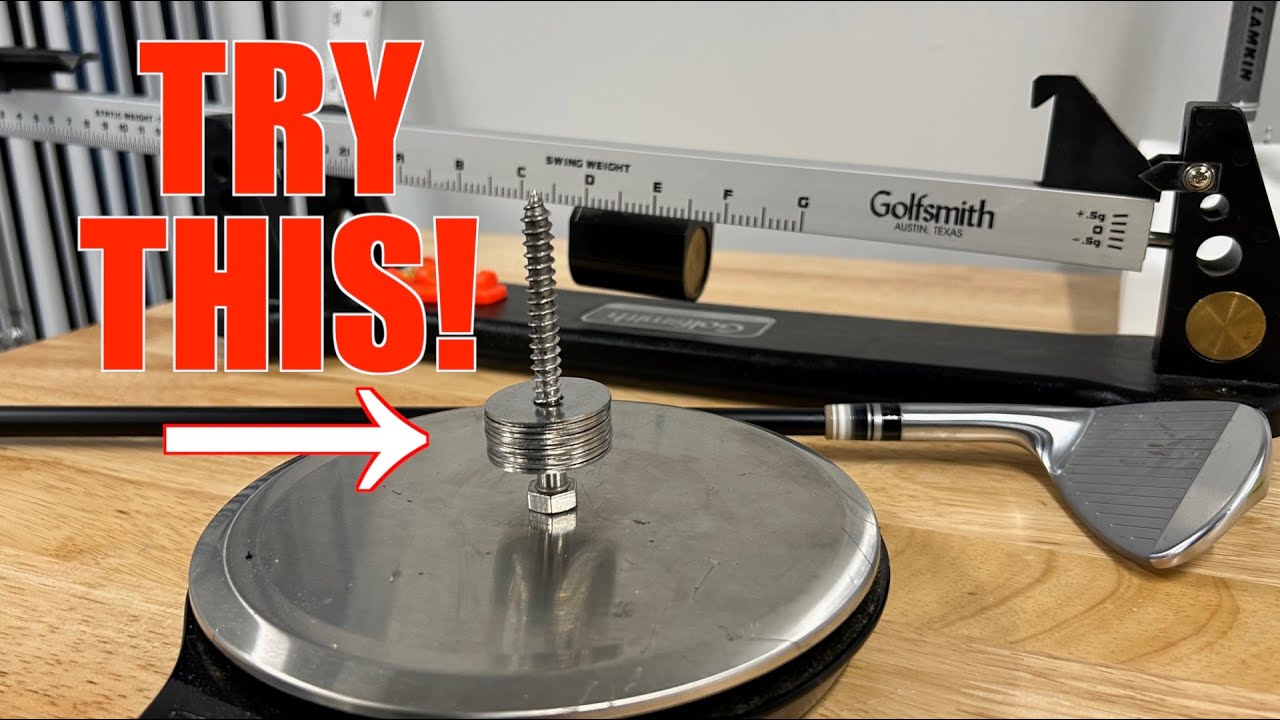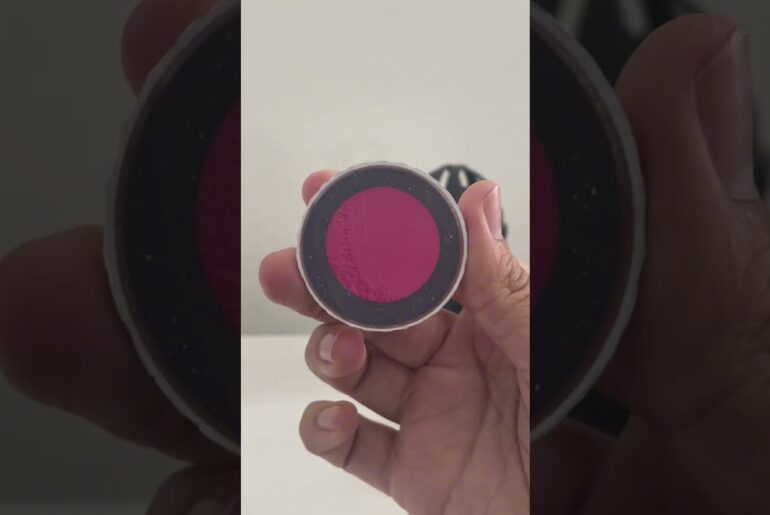This idea came to me in the comments of a few of my videos. Simple way to experiment with Counter Balancing clubs to see if it can improve your golf game. Thank you to everyone who watches and comments on these videos and for all the great ideas and information you share!
Interested in a fitting, custom build, or repair. Contact me
adam@elitefitgolf.com
All right, I’ve got a super easy, super cheap trick if you want to experiment with counterbalancing or extreme counterbalancing. And guess what? It came from you guys. Let’s go. Hi everyone, welcome back to the channel. Hope you’re having a wonderful day. So, I talk about counterbalancing a good bit on this channel. I’ve gone as far as to start dealing with extreme counterbalancing where I put more of the weight out past where my hands sit. I get a lot of people asking about experimenting with this, trying this idea out uh to see if it works for their own clubs. So, down in the comments, I’ve gotten this this hack, this trick on a few different occasions now. And well, basically for all the people who don’t go down and read all the comments, uh, I wanted to show this one off because I think this is a really good idea to both quickly and inexpensively experiment with counterbalancing, with extreme counterbalancing, both just the idea of adding weight and the amount of weight. And I think this is probably the easiest way to go about doing that. All right, so what are we going to need for this? First off, I’ve got from any hardware store just a standard steel lag screw. Now, this has the hexagonal top on it, but you don’t have to get one with this top. It could be a regular Phillips head or whatever type top to it. Essentially, all we’re really needing is a screw that is thick enough where it will fit inside the vent hole of a golf grip without one tearing it from being too big or sliding out from it being too small. So, this one is 3 in long and 5/16 diameter. I think you could easily use a quarter. You could probably go another size smaller than that even. The other thing that we’re going to use along with this are some standard galvanized steel washers. And these washers really I only had two criteria. One, I wanted to make sure that the hole was big enough that I could fit the screw through it. I didn’t realize when I bought them. You can see here I can’t quite get it all the way to the butt end because it kind of flares out here at the very end. uh this doesn’t really matter, especially since this is going to be temporary and just for experimenting. And the other thing that you want to be aware of or paying attention to when you pick out the washer is you want something that is going to be probably similar in diameter to the top end of the grip. So, this one right here is just a little bit larger, but not by much. I wouldn’t go with anything much larger than this because I wouldn’t want it to inadvertently get sort of brushed up against your clothes or rubbing against your wrist when you’re swinging. So, something that fits about the same size, about the same width as the butt end of that grip. Size on this washer, just in case you’re trying to match things up exactly, is one quarter, that being the inside here, by one and a quarter, that being the outside diameter here. So, all I did was went to the hardware store, bought one of these screws and a whole bunch of these washers. And I think you can kind of see where we’re going at this point. We can take them starting with our just base weight, which again weighs out at about 24 g, and we can start adding washers to it and going up in about 7 g increments. So, we go from 24 to 31 to 38 to 45. All right. So, let’s uh experiment a little, see how it works. So, we’re going to do the screw itself, which again, 24. And then let’s add a couple washers to it. That’ll put us right about 40 g, just a little under 40 grams. So, we’re going to take our two washers. We’re going to stack them up and thread them here onto the screw. And now we’re going to take this whole screw and we’re just going to work it onto the grip. I’m going to go ahead and just use my uh ratchet here. Okay. So, now I’ve got this together. I’ve got the screw all the way down. And I’m realizing that there are probably a couple things I would do slightly different. one, I would get a slightly shorter screw because that took a long time to get this all the way down in there when it is 3 in long starting. And also, I would get a screw where the threading goes all the way to the top. All right, let’s hit a few balls with it. Again, we do have there’s a little bit of a jiggle there. A little bit of a jingle, I should say. It feels a little bit like Christmas, but again, that was me not getting a screw that extends all the way up. But for this experiment, I think it’s just fine. When I grip the club, I don’t feel the washers in any way. So, those aren’t bothering me. I don’t really notice it. The screw sticks out just a little bit, but not enough where it’s going to impact me or get tangled in my clothing or anything like that. So, I’m also working on some swing modifications right now. So, uh, don’t pay too much attention to how I’m hitting it. I’m I’m trying to work on some things, but, uh, that wasn’t a bad start. It does have that little bit of a jingle sound to it, but it doesn’t bother me. Again, this is not meant to be a permanent solution. This is meant to be you, uh, getting a chance to experiment with it, figure out how much weight is the right amount, and then you can set up a more permanent version of it using one of the methods that I’ve shown you in some other videos. A little skinny there, but not too bad. That one was pretty good. All right, so that’s two washers. Let’s just add a ridiculous number just for fun, just to see what happens. Make sure it still all stays together. Let’s go ahead and just add three, four, five, six. Well, heck, I bought 10. Let’s use all 10. Why not? 7, eight. Two more. That’s 10 total. How much weight are we going to be adding here? 96 grams. almost 100 extra grams of weight between the screw and these 10 washers. So, let’s go ahead and get this screwed back in here. All right. Just like that. Those are actually in there pretty snug overall. I don’t really feel any movement. We’ll see if it starts to jiggle at all. But again, this is a very extreme example with 10 washers. So, most people probably aren’t going to be doing anything close to this. Now that I’ve got uh all these extra washers, it pushes everything a little bit further up with the screw. And so, now the threading actually holds against that uh vent hole in the grip. So, it’s a little more stable now than it was with just those two washers originally. We’ll see how well it stays together again. 10 washers feels like it’s a bit extreme in most cases, but you don’t know until you try. Pretty good. Actually doesn’t feel terrible considering I’ve almost doubled the weight of the shaft now with counterbalance weight. And this would actually fall into what I am categorizing as extreme counterbalance because obviously this weight is above my hands. But if it was in a more, you know, if we weren’t using quite as much weight, it would be very close to the end and I think would be deemed a pretty traditional counterbalance setup. Pulled it just a little bit. Feeling it come loose just a little bit there. I think I brushed against it with my wrist. So, we’ll tighten it up just a little bit. Nah, won’t be a hole in one, but not too bad. 96 extra grams of weight doesn’t feel terrible. All right, so 10 washers still did what it was supposed to do. They held together. They didn’t slide around. It didn’t fall out. Uh, actually, I think it probably holds again slightly better because the threading was engaged against the vent hole of the grip. Uh, but again, I would go ahead if I was redoing this, go ahead and get yourself a screw where where the threading goes all the way up. This cost me all of the screw was about 250 and the washers 25 to 35 cents a piece. So, we’re talking, you know, $5 or so all in and you can take it to the range. You don’t need any special tools. You don’t need any special equipment. Just the washers, the screw, maybe a ratchet or a screwdriver, and you’re good to go. You should be able to answer the question, is counterbalancing something you want to try out on your clubs in a more permanent basis using this very simple, easy, inexpensive hack that again came to me from you guys out there who left it down in the comments. So, thank you for everyone who watches these videos. Thank you to everyone who goes down and leaves comments about these videos with new ideas, things that I hadn’t thought of before, things that other people had never thought of before. We’re all sort of sharing information, and that’s what makes all of this really exciting and fun. So, I hope you enjoyed this one. Again, definitely let me know down in the comments what you think of this. Let me know if you’ve got some other little hacks, some other fittings, some other equipment ideas out there that maybe I hadn’t thought of. I would love to hear those and maybe be able to bring them to the wider audience. Uh again, if you’re not reading the comments, maybe go down, read some of the comments because there’s definitely some some good stuff down there. I hope you enjoyed this video. If you did, make sure you go down below, like, comment, subscribe, hit the bell icon so you’ll be alerted when I post new videos. If you’re interested in a fitting, in a custom build, in a repair, all my contact information is down below. And I will see you next time. Bye.








18 Comments
I don't piddle around with making clubs much anymore, but weight is weight. If I did, I would run down to Tractor Supply where they sell nuts, bolts, and what not by the pound very cheap, and stock up for permanent clubmaking. You will pay a tiny fraction of what you would pay otherwise.
Since putting XL jumbo max grips on my Wilson D7 irons I’ve been very interested in the subject. Thanks for sharing this video that I’m about to watch.
When you add counterweights, does it slow down clubhead speed?
I really wish you had a provided some stats and personal thoughts on it though
I was hoping you would show stats from the different swing weights. I have used a butt extension and fishing lead weights with a scale and did a little measuring to get all my swing weights to match.
Looking for your opinion regarding pros and cons.
Thanks, I tried this years ago and keep a variety of bolts with different weights in the bag. Utho , don't tell the USGA.
Am I missing something? Isn't this just setting the swing weight of a club? I prefer d7 for the most part. Still tinkering.
So what's the purpose of counter balancing? What will this help?
So what were the benefits; did it feel better, did it go further ?
Something different❤
The only problem with this hack is if it worked for me I'd be playing with the clubs like that for months or until I could no longer stand the ridicule, before spending out to do it properly.
Nice way to try this, thanks for sharing.
Just tape some coins to the end.
Well I hope to be doing this counterbalance very soon. I really want to just try it out and see what happens. Thank you for sharing this information. It'll be very interesting. Im hoping.😉
Nice, but was hoping you would tell us how that impacted your stroke.
Where is the Data? What is the purpose without comparing results?
How much weight should be used in the average counterbalance on an iron or also on a driver?
I always wondered about the way XXIO have made their drivers with lighter shafts and counterweight in the grip end? Also would you consider doing a report on the XXIO driver and/or irons to help old golfers like me.
At least it could be advantageous doing this to my own driver or whether I give over the extra cash for XXIO clubs.
At least I can try it out on the cheap with this method.
Can you do a similar video for putters please?